Babri Masjid: The Timeline of a Demolition
Note: This article was originally published on September 30, 2020 and is being republished on December 6, 2021 – 29 years since the mosque was demolished.
A special CBI court in Lucknow on September 30, 2020, delivered the judgment on the 1992 Babri Masjid demolition case, acquitting all those accused of conspiracy.
Few cases have captured public attention, polarised watchers and dragged on for longer than the this one has.
The mosque in Ayodhya was demolished on December 6, by ‘kar sevaks’ who claimed that an ancient Ram temple stood at the same site.
In 2019, a five-judge Constitution bench of the top court had ruled that the 2.77-acre land claimed by both Hindus and Muslims would be handed over to a trust for the building of a temple.
Among accused are several leaders of the Bharatiya Janata Party, in power at the Centre today. The 32 accused include former deputy prime minister L.K. Advani, along with Murli Manohar Joshi, Kalyan Singh and Uma Bharti, who have all been asked to be present in court.
Also read: Ayodhya’s Class of 1992: The Key Conspirators
The following timeline attempts to offer an idea of the events that led to the demolition and those that shaped how it will be seen in history:
1528: The Babri Masjid is built in Ayodhya by Mir Baqi, upon the instructions of the Mughal emperor, Babur.
1855: Sunni Muslims claim the temple of Hanumangarhi in Ayodhya is built on the site of a destroyed mosque. Clashes begin between them and Bairais, but Nawad Wajid Ali Shah is believed to have intervened on behalf of the temple to maintain peace.
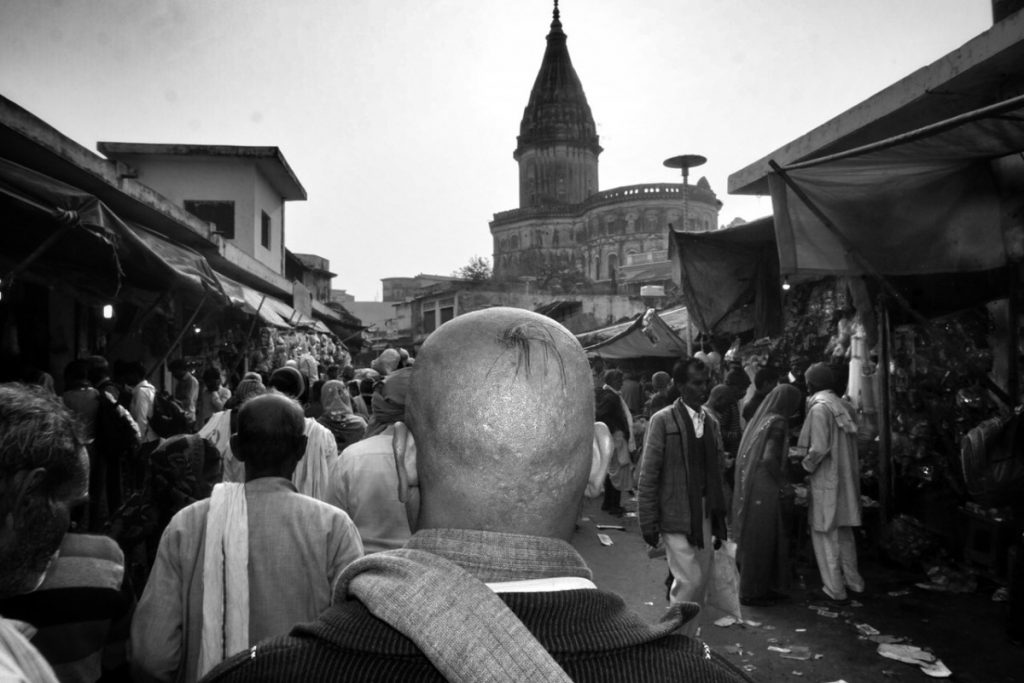
Hanumangarhi or the temple of Hanuman in Ayodhya which sparked tensions on December 22, 1949. Photo: Shome Basu
1859: The British administration erects a fence around Babri Masjid, as the belief that the mosque is the birthplace of Ram gains currency. Hindus are allowed to worship in the outer court.
1885: Mahant Raghubir Das's plea to build a worshipping platform in this outer courtyard is rejected by a local court.
March 1934: The mosque and its dome sustain damages during violence between Hindus and Muslims. The British government takes up rebuilding efforts.
1947: A local court rules that it is the Sunni Waqf Board and not the Shia Waqf Board that can hold sway over the Babri Masjid.

Mahant Bhaskar Das with Hashim Ansari, the 1950 Muslim litigant. Photo: File
December 22, 1949: District Magistrate K.K. Nayar refuses to remove idols of Ram placed inside the mosque by Hindu Mahasabha members, citing possibility of riots. Nayar eventually joins the Jan Sangh and becomes an MP. The mosque comes under lock and key
1950: Muslim and Hindu parties file suits in Faizabad court, asking for permission for namaz and prayers, respectively. The inner courtyard remains locked. An interim injunction allows a pujari in but forbids entry to others.
1959: A third suit is filed in the same court by the Nirmohi Akhara, headed by Mahant Bhaskar Das, which asks for pujas to be conducted even on the disputed grounds.
1961: The UP Sunni Central Waqf Board files a fourth suit in the same court, asking for Muslims to be allowed to pray in the mosque.
1981: The above board files for possession of the site.
1984: As the 'Ram Janmabhoomi' movement gathers steam, L.K. Advani of the new political player Bharatiya Janata Party, becomes its de facto leader. The Vishwa Hindu Parishad leads a Shriram-Janaki rath yatra from Sitamarhi in Bihar to Delhi. Six similar yatras take place in Uttar Pradesh. BJP wins only two seats out of 541 in the Lok Sabha polls.

LK Advani. Photo: PTI
1986: A district judge -- according to historian Ramachandra Guha, under orders from the PMO -- directs that the Babri Masjid gates be unlocked and Hindus be allowed to worship there. In protest, Muslims set up the Babri Masjid Action Committee. Parliament passes the Muslim Women (Protection of Rights on Divorce) Act, 1986, effectively overturning the Supreme Court verdict in the Shah Bano case, a crucial factor that paved the way for BJP's participation in the Ayodhya movement, according to Advani, who became party chief in that year..
1989: Allahabad high court orders maintenance of status quo with respect to the Babri Masjid after a fresh suit is filed by VHP vice-president and former judge of the court Deoki Nandan Agarwal seeking to become the "sakha" or friend of the deity and its birthplace in the title suits
November 9, 1989: Rajiv Gandhi government allows the VHP to perform shilanyas (laying of the foundation stone) for the Ram temple on November 9, 1989, on the disputed land.
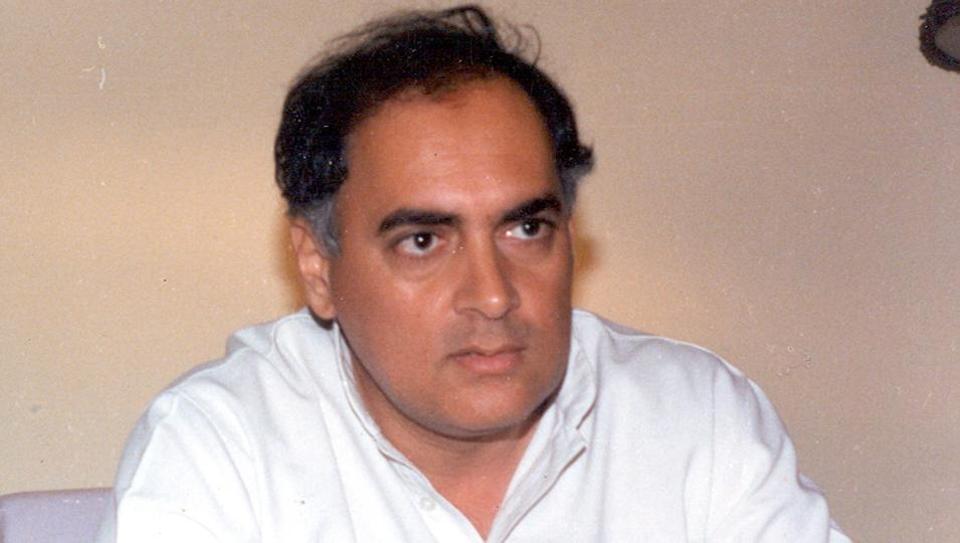
Former Prime Minister Rajiv Gandhi. Photo: INC
September 25, 1990: BJP President L.K. Advani launches his Rath Yatra from Somnath to Ayodhya to gather support for the Ram temple. He is arrested in Samastipur in Bihar by the government of Lalu Prasad Yadav in November, 1990. Vishwa Hindu Parishad leader Ashok Singhal is also arrested.
October 30, 1990: Kar sevaks clash with the police on their way to Ayodhya's Babri Masjid and at least 20 are killed. Communal clashes rock Uttar Pradesh.
Also read: Night of Terror: The Dust Kicked up Before the Babri Masjid Demolition
1991: BJP, which had withdrawn support to the V.P. Singh government, emerges as the second-largest party with 121 seats in the Lok Sabha following the general elections. In Uttar Pradesh, Kalyan Singh heads the BJP government.
December 6, 1992: A crowd of almost 150,000 people gather to listen to speeches by BJP and the Vishwa Hindu Parishad (VHP) leaders - including LK Advani and Murli Manohar Joshi - at the Babri Masjid in Ayodhya. The crowd later storms the mosque and demolishes it in a few hours. The demolition occurred despite assurances from the state government to the Supreme Court that the mosque would not be harmed.
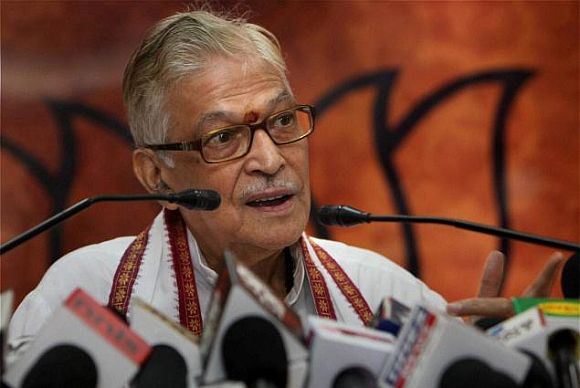
Murli Manohar Joshi. Credit: PTI
After the demolition of the Babri Masjid, on the evening of December 6, 1992, kar sevaks started attacking Muslim residents of Ayodhya, ransacking and demolishing their houses. Eighteen Muslims were murdered, almost all their houses and shops were torched and destroyed, including 23 local mosques. Additionally, riots broke out in different parts of the country, including Mumbai, and around 2,000 people were killed.
Two FIRs are filed, one against kar sevaks for the demolition and the other against the likes of Advani, Joshi and Bharti, for the communal speeches they delivered that led to the demolition.
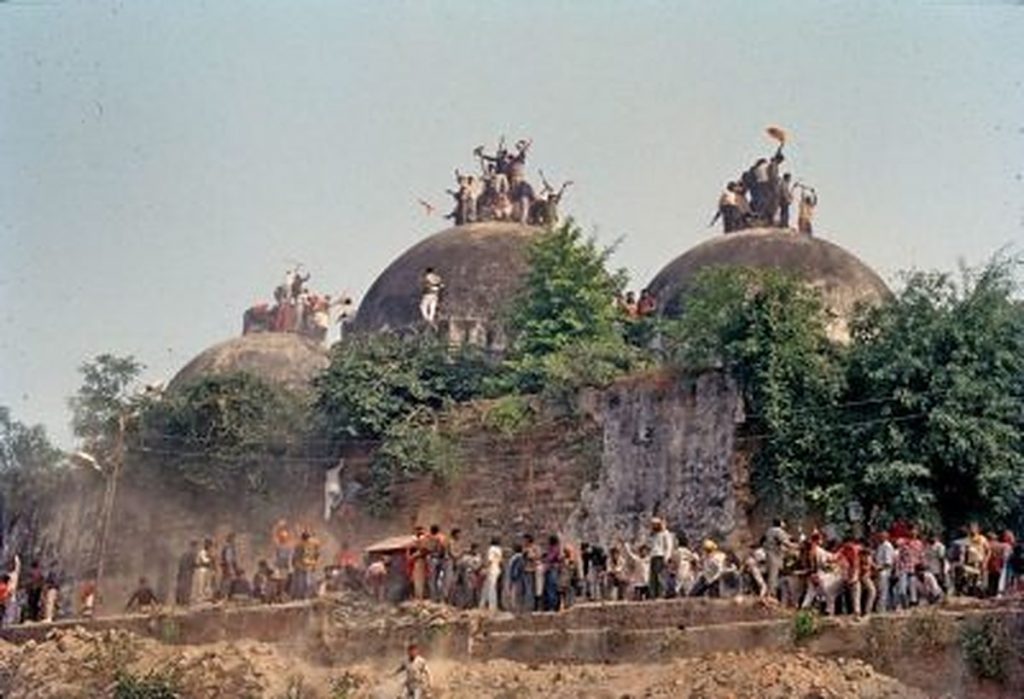
The demolition of the Babri Masjid in 1992. Photo: Sanjay Sharma/INDIAPIX NETWORK
December 8, 1992: Muslims in Pakistan attack more than 30 Hindu temples. Pakistan government closes offices and schools for a day in protest against the destruction of the mosque in India.
December 16, 1992: The Narasimha Rao government sets up the Liberhan Commission to investigate the case.
1993: The Centre acquires 67.703 acres of land in and around the Babri Masjid under the newly passed 'Acquisition of Certain Area at Ayodhya Act'. CBI takes over the criminal case. A chargesheet is filed against Advani and 19 others for inciting the demolition.
1994: The Supreme Court finds UP chief minister Kalyan Singh guilty, sentences him to token imprisonment of one day with a fine of Rs 20,000.

Former UP chief minister and Rajasthan governor Kalyan Singh. Photo: PTI
2001: An NDA government is at the Centre now. A special CBI court drops proceedings and conspiracy charges against the accused including Advani, M.M. Joshi, Uma Bharti, Bal Thackeray and others.
2002: PM Vajpayee sets up an 'Ayodhya cell' in his office and appoints a senior official, Shatrughan Singh, to hold talks with Hindu and Muslim leaders.
While BJP does not commit itself to a Ram temple in its Uttar Pradesh assembly election manifesto, VHP sets a deadline of March 15 to begin construction. Hundreds of volunteers converge on site.
The Allahabad high court directs the Archaeological Survey of India to excavate the Babri Masjid site to determine if a temple lay underneath.
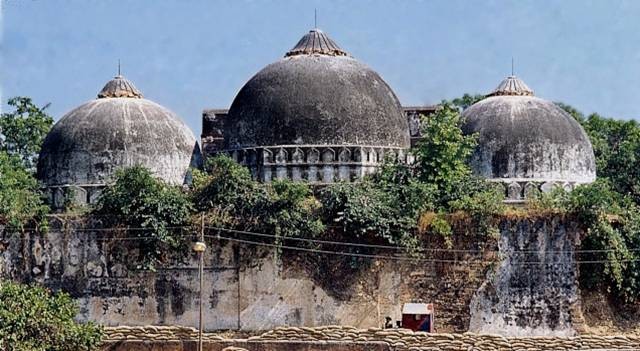
Rear view of the Babri Masjid in Ayodhya before it was demolished. Photo: Wikimedia Commons
2003: The ASI submits a report, refuted by archaeologists and historians, saying that there is evidence of a 10th century temple beneath the mosque.
CBI special court rules that seven Hindutva leaders should stand trial for inciting the destruction of the Babri Mosque, but no charges are brought against Advani, now deputy prime minister, who was also at the site in 1992.
2004: The court rules that the earlier order which exonerated Advani for his role in the destruction of the mosque should be reviewed.
2005: Six suspected Lashkar-e-Taiba terrorists attack the disputed Ram Janambhoomi complex in Ayodhya.
2009: The Liberhan commission submits its report, 17 years after it began its inquiry.
The Commission finds several BJP leaders like Atal Bihari Vajpayee, Lal Krishna Advani, Murli Manohar Joshi, Kalyan Singh, Pramod Mahajan, Uma Bharti and Vijayaraje Scindia, and VHP leaders like Giriraj Kishore and Ashok Singhal and Shiv Sena chief Bal Thackeray and former RSS leader K. N. Govindacharya culpable in the demolition of the mosque.
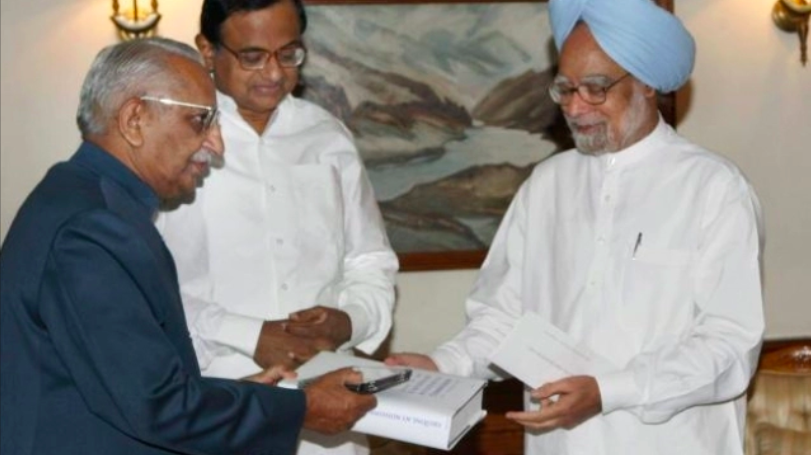
Liberhan submits his report. Photo: File
2010: Allahabad high court rules that the disputed land in Ayodhya where the Babri Masjid was shall be divided into three parts. A two-thirds portion is to be shared by two Hindu plaintiffs and one-third will be given to the Sunni Muslim Waqf Board.
2011: Supreme Court suspends high court ruling after Hindu and Muslim plaintiffs appeal against the verdict.
2016: BJP MP Subramanian Swamy files plea in Supreme Court seeking construction of a Ram temple at the Babri Masjid site. The prime minister is now Narendra Modi, of the BJP.
The oldest litigant in the Babri Masjid case, Mohammad Hashim Ansari, dies at 95 years of age.
2017: Adityanath, founder of the Hindu Yuva Vahini, takes oath as chief minister of Uttar Pradesh.
Supreme Court rules that L.K. Advani, Murli Manohar Joshi and Union minister Uma Bharti, in addition to other BJP members and kar sevaks, will face charges of criminal conspiracy in the Babri Masjid demolition case. Kalyan Singh was excluded from the list because he held the post of the governor of Rajasthan. Several of the original accused, including Shiv Sena leader Bal Thackeray, had died during the trial.
The court orders that the trial, to be held in Lucknow, be completed in two years.
The special CBI court frames charges against the BJP leaders but grants them bail.
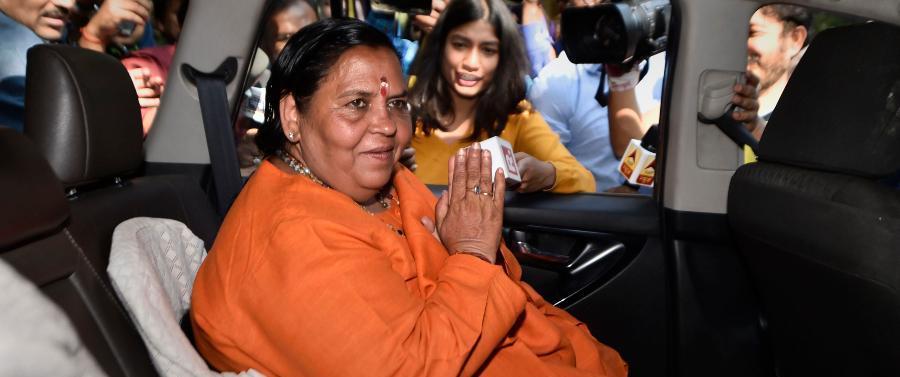
Uma Bharti. Photo: PTI
2018: Supreme Court starts hearing the civil appeals in the title dispute, rejects all interim pleas, including Swamy's, seeking to intervene as parties in the case.
It also declines to refer the case to a five-judge Constitution bench.
2019: Supreme Court sets up a five-judge Constitution Bench to hear the title dispute, headed by Chief Justice Ranjan Gogoi and comprising Justices S.A. Bobde, N.V. Ramana, U.U. Lalit and D.Y. Chandrachud. Justice U.U. Lalit recuses himself. A new bench comprising CJI Gogoi and Justices S.A Bobde, D.Y. Chandrachud, Ashok Bhushan and S.A. Nazeer is constituted to hear the case.
The special judge holding the trial in the Babri Masjid demolition case moves the Supreme Court seeking six more months to conclude the trial.
October 14, 2019: The Ayodhya district administration imposes Section 144 until December 10 in view of the imminent Supreme Court verdict in the case.
October 16, 2019: In a surprise development on the last day of the hearings, the primary Muslim litigant in the title dispute case informs the Supreme Court that it is willing to drop its appeals in the matter - and its claims to the land on which the historic Babri Masjid stood for centuries before it was demolished by Hindutva activists and leaders in 1992 - provided the Centre is willing to guarantee that all other places of worship in India will be protected from similar encroachment. Other Muslim plaintiffs dissociate themselves from this offer, which in any case was not accepted by the main Hindu plaintiff, i.e. the VHP.
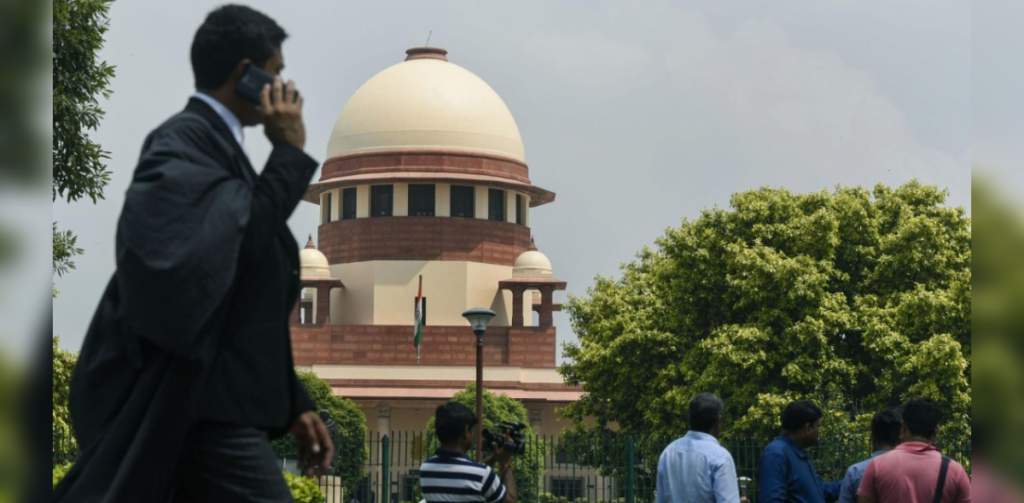
A file photo of Supreme Court of India. Photo: PTI
November 8, 2019: Supreme Court registrar says verdict in the title suit will be delivered at 10:30 am on November 9, 2019.
November 9, 2019: The Supreme Court pronounced its "unanimous" verdict in the Ayodhya title dispute case, saying that the Hindu parties will be given the disputed land where the Babri Masjid once stood. The Sunni Waqf Board, the biggest Muslim litigant in the case, will be given five acres at a separate "prominent" location in Ayodhya.
May 8, 2020: The Supreme Court extends by three months the time for completion of trial in the demolition case and says that judgment should be delivered by August 31. This is extended in August by a month.
August 5, 2020: A bhoomi pujan of the Ram Temple is conducted at the Babri Masjid demolition site, headed by Prime Minister Narendra Modi. The ceremony is telecast on several news channels. None of the original accused BJP leaders attend.
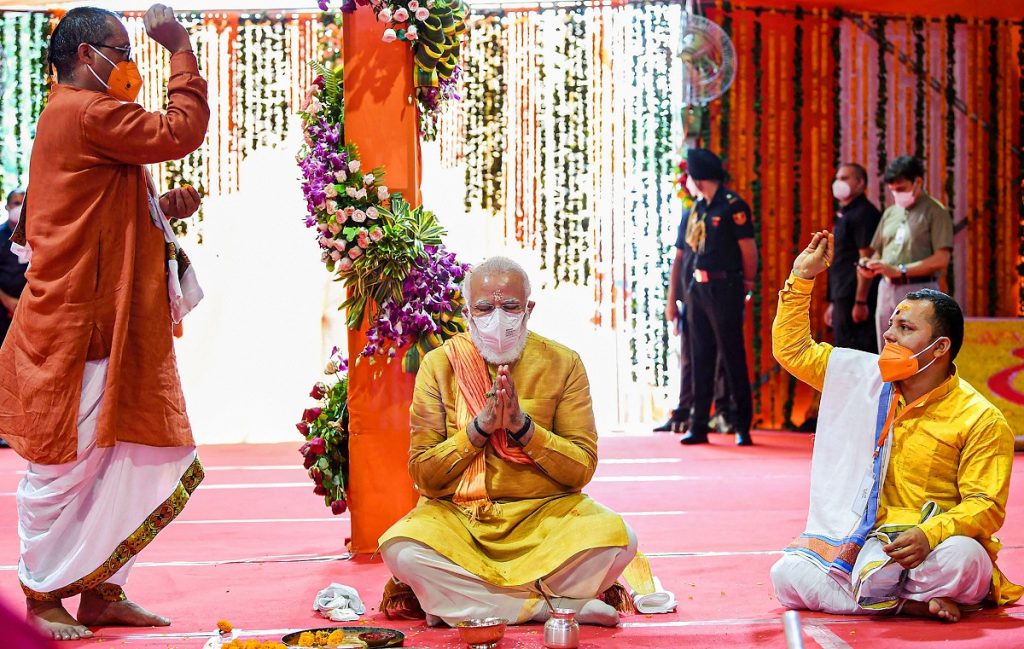
PM Narendra Modi takes part in the bhoomi pujan for the construction of a Ram temple in Ayodhya, August 5, 2020. Photo: PIB
September 16, 2020: The special CBI court in Lucknow says that it will deliver the judgement on the 1992 Babri Masjid demolition case on September 30.
September 26, 2020: Uma Bharti, one of the accused, writes a letter to BJP chief J.P. Nadda, saying she will not seek bail if convicted.
September 30, 2020: The special CBI court acquits all 32 accused in the Babri Masjid demolition case, including former deputy prime minister L.K. Advani, former Union ministers Murli Manohar Joshi and Uma Bharti, former Uttar Pradesh chief minister Kalyan Singh.
This article went live on December sixth, two thousand twenty one, at thirty minutes past eight in the morning.The Wire is now on WhatsApp. Follow our channel for sharp analysis and opinions on the latest developments.





